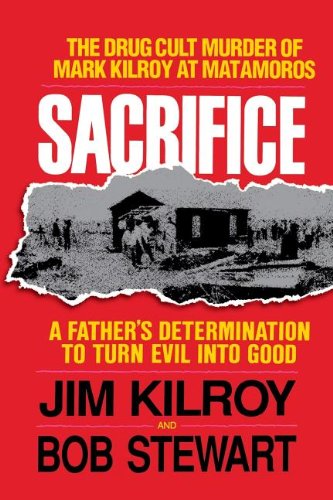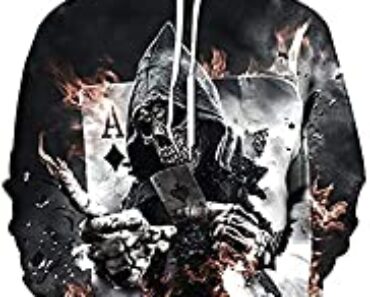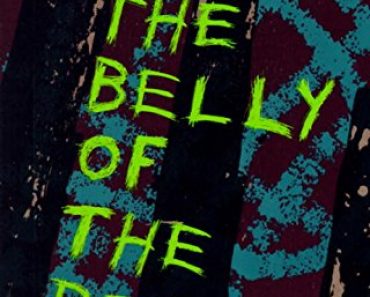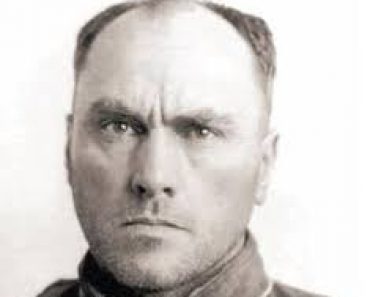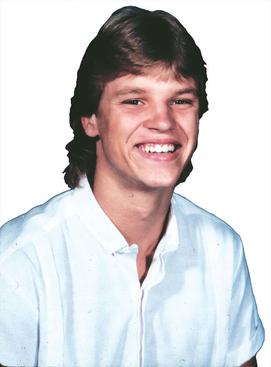 On March 14, 1989, University of Texas at Austin student Mark James Kilroy was kidnapped in Matamoros, Tamaulipas, Mexico while vacationing during spring break.
On March 14, 1989, University of Texas at Austin student Mark James Kilroy was kidnapped in Matamoros, Tamaulipas, Mexico while vacationing during spring break.
What Happened to Mark James Kilroy
Mark was taken by his abductors to a ranch where he was murdered in a human sacrifice ritual. Kilroy was killed with a machete blow and then had his brain removed and boiled in a pot. His killers then inserted a wire through his backbone, chopped off his legs, and buried him at the ranch along with 14 other people who had been killed there before him. Adolfo Constanzo, the leader of the cult, told his followers that human sacrifice granted them immunity from law enforcement for their drug smuggling operations. The killing drew worldwide media attention and an international police manhunt because of the unusual circumstances of the crime.
After the bodies were discovered on April 11, 1989, Constanzo fled to Mexico City but was eventually tracked down. As the police surrounded his apartment complex, Constanzo died after ordering one of the cult members to kill him with a machine gun. Sara Aldrete, another high-ranking member of the cult, was arrested at the scene along with several others. In 1993, the cult members were found guilty of a number of charges, including capital murder and drug trafficking. Several of them, however, claimed they were not guilty of Kilroy’s murder and told the press they were tortured to confess. Only two suspects remain at large.
Background
The Victim – Mark James Kilroy
 Mark James Kilroy was born on March 5th, 1968 in Chicago, Illinois. His parents were James and Helen Josephine. They moved to Texas from the Midwest after their son (Mark) was born. Kilroy grew up in Santa Fe, Texas, a small town outside of Houston, for over 15 years along with his brother Keith Richard. He was raised Catholic and his parents were frequent attendees at Our Lady of Lourdes Catholic Church in the adjacent town of Hitchcock, Texas.
Mark James Kilroy was born on March 5th, 1968 in Chicago, Illinois. His parents were James and Helen Josephine. They moved to Texas from the Midwest after their son (Mark) was born. Kilroy grew up in Santa Fe, Texas, a small town outside of Houston, for over 15 years along with his brother Keith Richard. He was raised Catholic and his parents were frequent attendees at Our Lady of Lourdes Catholic Church in the adjacent town of Hitchcock, Texas.
Mark excelled both in academics and athletics as a teenager, and played baseball, basketball, and golf with his friends at school. He was in the Boy Scouts of America and an honors student at Santa Fe High School, where he was member of the student council, and was ranked 14th in a class of 210 students. Upon graduation in 1986, he attended Southwest Texas State University in San Marcos, Texas before transferring to Tarleton State University in Stephenville, Texas on a basketball scholarship. At Tarleton he became a member of the Lambda Chi Alpha fraternity. Mark then decided to give up his athletics and transferred to the University of Texas at Austin to become a pre-med student and prepare for his Medical College Admission Test.
Adolfo Constanzo – The Killer
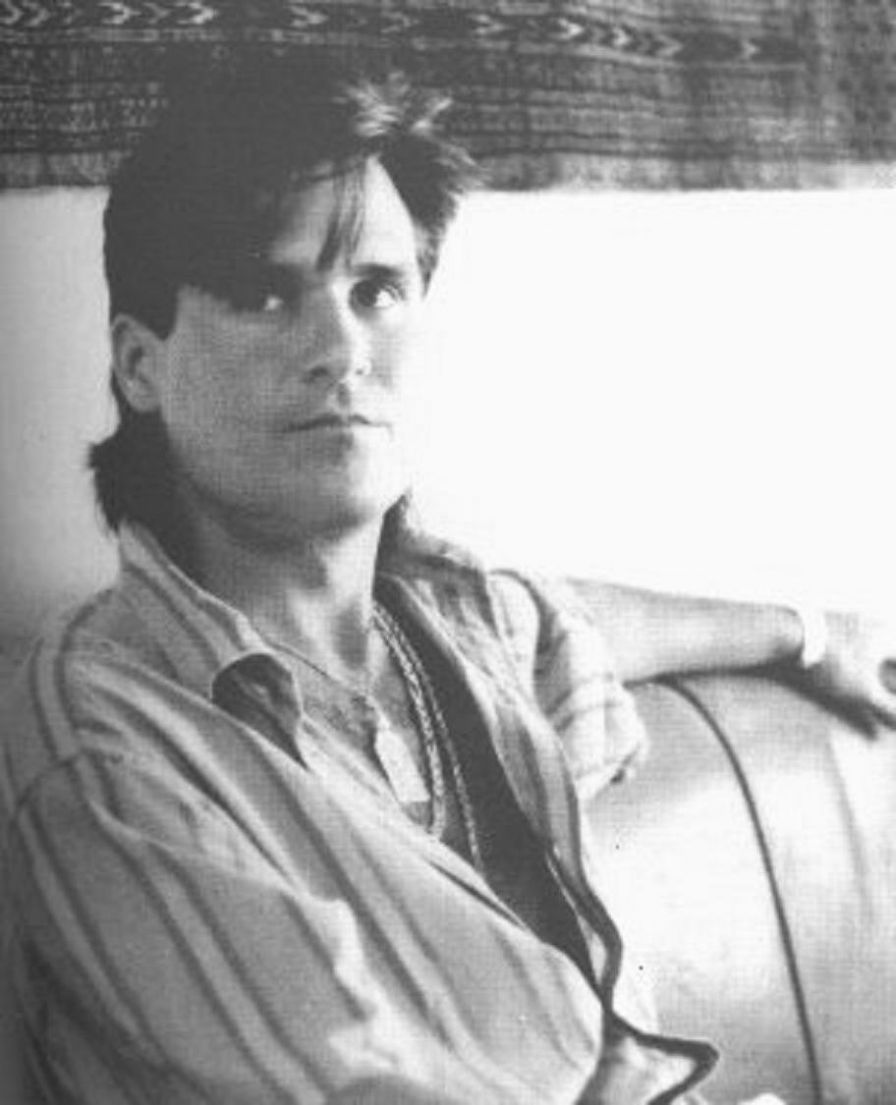 Kilroy’s murderer, Adolfo Constanzo, was a Cuban American who was born in Miami, Florida in 1962. His father died when he was an infant, so his mother relocated to Puerto Rico with him, where she remarried. They returned to Florida in 1972 and his stepfather died soon afterwards, leaving a large inheritance behind. His mother married again, this time with a man who was involved in drug trafficking and the occult. His stepfather taught him a philosophy that Constanzo carried for the rest of his life: he told him that he should let nonbelievers “kill themselves with drugs” while he could profit from their foolishness.
Kilroy’s murderer, Adolfo Constanzo, was a Cuban American who was born in Miami, Florida in 1962. His father died when he was an infant, so his mother relocated to Puerto Rico with him, where she remarried. They returned to Florida in 1972 and his stepfather died soon afterwards, leaving a large inheritance behind. His mother married again, this time with a man who was involved in drug trafficking and the occult. His stepfather taught him a philosophy that Constanzo carried for the rest of his life: he told him that he should let nonbelievers “kill themselves with drugs” while he could profit from their foolishness.
Around the same time, Constanzo’s mother believed that her son had psychic abilities. She introduced him to Palo Mayombe, an Afro-Caribbean religion that involves animal sacrifice.
He also was introduced to Santería when he was younger. He started as a “palero”, someone who practices Palo Mayombe, and eventually reached the status of high-priest, “padrino.”
In 1984, Constanzo moved to Mexico City to start his life as a tarot card reader and eventually developed a cult following. His psychic talent, charisma, and physical attractiveness (he previously worked as a male model) granted him the opportunity to mingle with Mexico City’s upper class. His reputation for predicting the future and offering ritual cleansing became popular with some drug dealers, musicians, and police officers.
Sara Aldrete – High Priestess
 The other cult leader was Sara Aldrete, a honors student and cheerleader at Texas Southmost College. She was the girlfriend of Gilberto Sosa, a drug dealer linked to the Hernández clan that Constanzo wanted an introduction to. In 1987, she met Constanzo and eventually became the cult’s main recruiter.
The other cult leader was Sara Aldrete, a honors student and cheerleader at Texas Southmost College. She was the girlfriend of Gilberto Sosa, a drug dealer linked to the Hernández clan that Constanzo wanted an introduction to. In 1987, she met Constanzo and eventually became the cult’s main recruiter.
Investigators believed that Sara Aldrete’s physical attractiveness and charm helped her lure men to join the cult or to set them up to get abducted and killed. She recruited people by first showing them the 1987 thriller film The Believers, which was about a New York City-based cult that practiced human sacrifice for money and influence. Constanzo’s members were forced to see the film again and again in order to indoctrinate them to the necessity of human sacrifice. Students and teachers at her college in Brownsville recalled her as a friendly and studious physical education student who showed no signs of abnormal behavior or involvement with a religious cult.
Across the border in Matamoros, however, Sara was involved in drug smuggling operations and in cult activities. Some of her former classmates found it suspicious that she drove a 1989 vehicle with an embedded telephone, while others recall she preferred to dress in black. Investigators believed that her proximity to the U.S.-Mexico border allowed for Aldrete to keep her two lives separate for years. Because of her contradictory lifestyle, law enforcement believed that Aldrete was living a double life and showed signs and symptoms of having a multiple personality disorder.
The Operation
The ranch where Mark James Kilroy was murdered in Matamoros, Santa Elena, was owned by Brigido Hernández. He was not a follower of Constanzo and was not charged with any crimes in the U.S. or Mexico. In the 1970’s, the ranch served as a drug smuggling base for the Hernández family on the U.S.-Mexico border. Brigido’s son Saúl Hernandez Rivera reportedly headed the operation by working with Colombian drug counterparts. According to the U.S. government, Saúl was responsible for importing between 454 and 907 kg (1,000 to 2,000 lb) of marijuana per week. The drugs were passed through the Brownsville corridor and sent to Houston for further distribution. In 1987, however, Saúl was shot dead by the Gulf Cartel outside a bar in Matamoros, forcing his brother Elio to take over the drug business. His sudden death prompted his family, including Elio and his brothers Serafín Sr. and Ovidio, to grow closer to rituals and eventually become members of Constanzo’s cult. Elio reportedly offered Constanzo half of his family’s drug proceeds in exchange for his criminal contacts and supernatural protection for his family.
Spring Break
Prior to the Disappearance of Mark James Kilroy
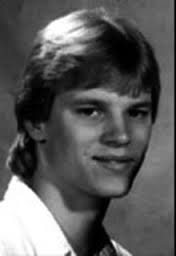 On March 10, 1989, Kilroy’s childhood friend Bradley Moore finished exams early at Texas A&M University and headed to Austin to pick him up. Both of them then headed to Santa Fe to pick up two other friends, Bill Huddleston and Brent Martin, before heading to South Padre Island, Texas for spring break. After a foggy, 9-hour drive to South Texas, they arrived at South Padre Island shortly before midnight. They checked in at the Sheraton Hotels and Resorts the next morning before heading to the beach.
On March 10, 1989, Kilroy’s childhood friend Bradley Moore finished exams early at Texas A&M University and headed to Austin to pick him up. Both of them then headed to Santa Fe to pick up two other friends, Bill Huddleston and Brent Martin, before heading to South Padre Island, Texas for spring break. After a foggy, 9-hour drive to South Texas, they arrived at South Padre Island shortly before midnight. They checked in at the Sheraton Hotels and Resorts the next morning before heading to the beach.
When they first got to South Padre Island, there was not a huge crowd of people because it was barely the first weekend out of a five-week spring break season. But thousands of students from the entire U.S. were beginning to arrive as the weekend progressed. Beer sponsors were staging a variety of entertainment events, including free movies, music concerts, calls home, surf-simulator activities, and opportunities to appear on TV commercials. Kilroy and Bradley made free phone calls to their parents that day. Later that evening, they met a group of female students from Purdue University and partied until the next morning.
The following morning, Mark James Kilroy and his friends had more or less a daily routine in mind. They went to the beach in the morning and suntanned before lunch. After lunch they went to the beach area behind their hotel for a daily Miss Tanline contest. Once the event was over that afternoon, Kilroy headed to the hotel for a quick nap before planning their trip to Mexico. They left South Padre Island that evening and stopped for dinner at a Sonic Drive-In in Port Isabel, Texas, where they met a group of female students from University of Kansas who were planning to party in Mexico as well.
Into Mexico
The girls then followed Brent’s car from Port Isabel to Brownsville and parked their cars close to the Gateway International Bridge before crossing the U.S.-Mexico border by foot. Kilroy’s friends and the Kansas girls spent most of their evening at Sergeant Pepper’s night club in Matamoros before the groups went their separate ways. Kilroy and his friends then returned to South Padre Island early the next morning. On March 13, Kilroy and his friends attended another Miss Tanline contest behind the Sheraton. Early in the evening, Kilroy met with one of his former frat brothers at a condo party. At around 10:30 p.m. CT, Kilroy and his friends headed back to Matamoros. They parked on the border and crossed by foot again.
That night, Matamoros was flooded with 15,000 spring tourists from the U.S. on the city’s main tourist street, Álvaro Obregón. The sidewalks, street, and night clubs were packed with foreign tourists looking to enjoy cheap alcohol and enjoy Mexico’s lax drinking laws. When they got to Matamoros, Kilroy and his friends decided to go to the bar with the shortest waiting line. They ended up at Los Sombreros, a bar with rock music and bright neon.
After a few drinks, Mark James Kilroy and his friends left Los Sombreros and wandered to London Pub, which re-branded itself as Hardrock Café for spring break. This bar was louder and wilder than Los Sombreros, and Kilroy and his friends stood at the bar while other tourists threw beer from the balcony. Kilroy met with a few girls at the bar and was not seen by his friends for a while. Around 2:00 a.m., Bill suggested the group head back to South Padre Island. As his friends stepped out of London Pub, they saw Kilroy leaning against a car and talking to a girl from Miss Tanline. Across Álvaro Obregón street, thousands of tourists were leaving the bars and heading to Brownsville, but others moved in different directions. The large crowd of people made it difficult for Kilroy and his friends to walk across the border uninterrupted and in a group.
The Disappearnce of Mark James Kilroy
Bradley and Brent separated from the group and walked to García’s, a popular restaurant-store close to the border. Mark James Kilroy stopped at the steps of a house on Álvaro Obregón to say good-bye to the girl from Miss Tanline. He then waited for Bill to walk towards him. Bill then ran to a nearby alley to urinate while Kilroy waited for him. By the time Bill came out and caught up to the other two near García’s, Kilroy had vanished. “Hey, Mark, stop fucking around”, Bill said, but Mark James Kilroy was nowhere to be found.
Mark’s friends searched for him for hours, even after the establishments had closed and the streets had cleared at around 4:30 a.m. They then crossed the border thinking Kilroy may have crossed to Brownsville and was perhaps waiting near their parked car. His friends did not find him near their car and waited a few minutes in Brownsville before heading to South Padre Island. They thought that Kilroy probably left to the hotel with someone else. They woke up the next day at the hotel and Kilroy’s whereabouts were still unknown. His friends then contacted the police to report him missing.
The Kidnapping of Mark James Kilroy
As Kilroy stood on the street, he was lured by a man parked inside a red truck who apparently called him and asked him if he needed a ride. As he got close to the vehicle, Kilroy was grabbed by two men, Serafín Hernández García and Malio Fabio Ponce Torres, and wrestled inside the truck. Because of his size and athletic strength, Kilroy was able to break loose about two blocks down the road after one of the gangsters stopped for a few moments to catch his breath. Mark ran from the truck but was eventually intercepted by another vehicle driven by the gangsters’ allies and taken at gunpoint. He was then subdued and handcuffed in the back of the second car.
The gangsters drove Kilroy through the back streets of the city and past an industrial area. The number of bars and vendor stands in the street began to thin out as they drove Kilroy through a highway in the city’s outskirts. The gangsters then turned to a dirt road that stretched between two corn fields. When they got to the private ranch known as Santa Elena, they left Kilroy inside the car overnight. Shortly after dawn, the ranch’s caretaker went to see Kilroy and fed him bread, eggs, and water. About twelve hours after Kilroy was kidnapped, Contanzo and his men came to see him. They wrapped his face and mouth with duct tape and walked him through a field to a storage cabin with his hands still tied around his back.
The Murder of Mark James Kilroy
Mark was led out to the field and Constanzo killed him by chopping the back of his neck and head with a machete. His brain was then boiled on a nganga, an African metal pot that Constanzo used to stew human and animal remains. Kilroy’s limbs were chopped off above his knees to facilitate his burial. A wire was inserted in his spinal cord to pull the bones out once the body decomposed. The cult members then dug a hole on the grounds and buried the corpse of Mark James Kilroy.
The Investigation Begins
 The search for Mark James Kilroy initially began as a routine missing persons investigation. Students that were reported missing in Matamoros in the past would often turn up in the following days with a hangover and blurry memory of what had happened to them. Kilroy was one of the 60 people who had disappeared in Matamoros in the first three months of 1989. However, his case drew more attention in the U.S. because his uncle, Ken Kilroy, worked at the United States Customs Service in Los Angeles. When the news reached his uncle, a police task force was created in Brownsville to search for Mark.
The search for Mark James Kilroy initially began as a routine missing persons investigation. Students that were reported missing in Matamoros in the past would often turn up in the following days with a hangover and blurry memory of what had happened to them. Kilroy was one of the 60 people who had disappeared in Matamoros in the first three months of 1989. However, his case drew more attention in the U.S. because his uncle, Ken Kilroy, worked at the United States Customs Service in Los Angeles. When the news reached his uncle, a police task force was created in Brownsville to search for Mark.
Alarmed with the bad publicity of his disappearance and the potential effects of tourism in Matamoros, local police officers tried to shift the blame and suggested that Kilroy had disappeared in Brownsville. Kilroy’s friends denied such claims. The Mexican federal police force vowed to work on the case and help U.S. investigators. One of the commanders assigned Mexican agents to U.S. officials to accompany them in Matamoros. Together they questioned informants, potential witnesses, and worked on tips provided by their sources.
Suspected Foul Play
Both Mexican and U.S. authorities suspected that Kilroy’s disappearance was some sort of foul play. They speculated that Kilroy could have been a victim of drug-related violence or of robbery-killing, but they were short on leads to make any firm conclusions. When Kilroy’s friends reported the disappearance, Customs agents went with them to Matamoros to help retrace their steps. Texan officials contacted the U.S. consulate in Matamoros and asked investigators to carry out a search with Kilroy’s description in Matamoros jails and hospitals.
Investigators then hired a hypnotist to see if he could figure out some clues. Under hypnosis, Bradley stated that he saw a young Hispanic man wearing a blue plaid shirt and with a visible scar across his face talking to Kilroy before he disappeared. He recalled that the man walked up to Kilroy and told him, “Hey, don’t I know you from somewhere?” though Bill said he was not sure if Kilroy responded back. However, none of the friends were able to precisely recall the exact moment or place where Kilroy disappeared. Investigators deduced by this story that Kilroy was kidnapped for robbery or ransom. The first option seemed the most likely because his abductors had not called for a payment. They believed that Kilroy’s body was probably dumped in a remote location. Helicopters and terrain vehicles of the United States Border Patrol were called to look on the Rio Grande River, but his body was not found.
Rewards Are Offered
During the investigation, Kilroy’s parents headed to the Rio Grande Valley and circulated more than 20,000 handouts throughout the region, and offered a $15,000 reward to anyone who could help locate their son. They met with Attorney General Jim Mattox, Texas Governor William Clements, and U.S. Senator Lloyd Bentsen to assist them on the case.
Texan officials told Kilroy’s parents that they were planning to talk to Tamaulipas Governor Américo Villarreal Guerra and get people from Matamoros more involved in their son’s disappearance. People from Kilroy’s hometown traveled to Matamoros and issued fliers looking for him and offering a reward to anyone who could provide information on his safe return. U.S. authorities had praised the efforts of the Mexican federal police on the case, but they distrusted the state and municipal officials. They suspected that because state and local authorities were acting slowly and not sharing enough information, Kilroy’s murderers had insiders within their ranks.
On March 26, the case was highlighted on national television in the crime show America’s Most Wanted. This gave the case nationwide notoriety and generated several phone calls and emails with people giving clues on Kilroy’s whereabouts. However, the police stated that none of the leads generated were solid enough to pursue. A few days later, Kilroy’s parents returned to Santa Fe. Santa Fe residents raised money through garage sales and car washes to help Kilroy’s family continue their search. In addition, Kilroy’s parents went to the University of Texas at Austin to withdraw their son from school.
The Investigation Tightens
On April 1, 1989, Mexican state authorities were stationed at a routine checkpoint near Santa Elena when they saw a vehicle that ran through the checkpoint without stopping. The vehicle had crossed the international border from Texas and sped through Mexican Federal Highway 2, which connects Matamoros and Reynosa, Tamaulipas. The man driving the vehicle was Serafín, who, unbeknownst to the officers, had kidnapped Mark James Kilroy weeks earlier.
Instead of turning their police sirens on, the police decided to follow the truck using an unmarked vehicle. They were then led to the ranch and pulled off at a distance. After about 30 minutes, Serafín took off from the ranch and headed back to the city. The officers decided to make their move to the ranch. In a quick search, the police discovered cult paraphernalia and marijuana traces. Instead of arresting Serafín, the police decided to continue gathering more evidences on the suspected criminal activities at the ranch and the organized crime members involved with the Hernández family. They used informants in Matamoros to inquire on what the family was up to at Santa Elena in order to make a series of crucial arrests.
On April 9th, they returned with several other policemen and arrested Serafín, his uncle Elio, cult members David Serna Valdez and Sergio Martínez Salinas, and Domingo Reyes Bustamente, the ranch’s caretaker. While in custody, the detainees were very relaxed. They were sent to prison while the police interrogated a caretaker at the ranch. This person revealed to the police that the ranch had frequent visitors from Serafín’s criminal group. The ranch’s caretaker identified Mark James Kilroy through a photograph and stated that he saw him at the ranch.”Yeah”, the caretaker told the police. “I saw him”, and then pointed at the shack at the ranch.
The Confession
When the police interrogated Serafín separately, he confessed to aiding in Kilroy’s murder and that other people were killed over the course of several months at Santa Elena. Serafín then identified Constanzo and Aldrete as the heads of the group. He said that Constanzo had ordered the slayings as part of a sacrificial ritual. Constanzo believed that by sacrificing his victims, those doing the sacrifice were ensured strength, abundance, and immunity from law enforcement and injury. Specifically, he said that Mark James Kilroy was chosen at random because Constanzo had ordered his men to find a white, Anglo male (Spanish: gringo) to sacrifice. He said that Kilroy was killed by Constanzo with a machete blow and that his body was buried at the ranch. Serafín agreed to take the police to the exact spot where Mark was buried, which was marked by a wire piece coming out of the dirt. He stated that the wire was attached to Kilroy’s spinal cord so they would be able pull out the bones and wear them as necklaces after the body decomposed.
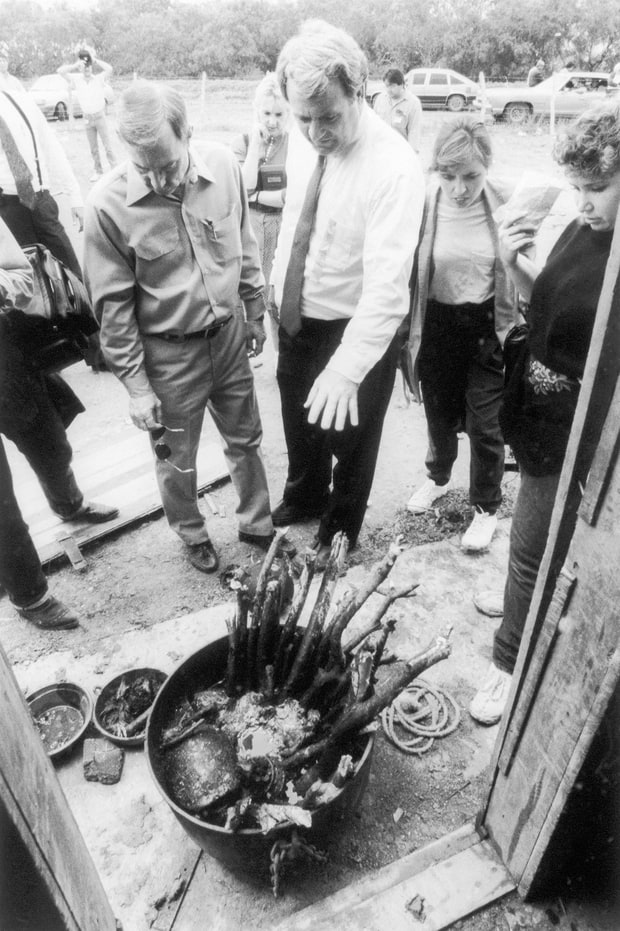
pic credit – Bettmann/Getty
Remains Discovered
On April 11, the police took Serafín and the four other suspects to Santa Elena and asked Serafín to show the police where Kilroy’s and others’ remains were kept. That afternoon, they were forced at gunpoint to spend several hours digging up the graves. Once Kilroy’s corpse had been exhumed, the police observed that his legs were missing; Serafín explained that the amputations were not a procedure of the ritual, but were done to simplify burial.
After the excavation concluded, the suspects had unearthed 15 mutilated bodies, including Kilroy’s, who had been killed over a period of nine months. Kilroy’s corpse was officially identified after the Brownsville police matched his dental records with the teeth found at the scene. Investigators concluded that most of the victims were rival drug dealers of Constanzo and not random sacrificial victims of the cult. Only three out of the 15 bodies were never identified. At Santa Elena, the Mexican police also seized 110 kg (243 lb) of marijuana, 108 grams of cocaine, 12 firearms including three sub-machine guns, and 11 vehicles, some equipped with telephones. Inside an iron pot, investigators discovered remains of human brain, a goat’s head, chicken feet, a turtle, several herbs, a horseshoe, and coins mixed with animal blood. They found no signs of cannibalism.
On April 12, the detainees were taken to the headquarters of the Mexican Federal Judicial Police in Matamoros for an informal press conference. More than 250 international journalists arrived at the scene to take pictures and ask them questions. The four suspects were paraded from the building’s balcony and were allowed to answer questions from reporters. Elio stated that he was an ordained executioner under Constanzo and that Mark James Kilroy was murdered by Constanzo. As the cameras zoomed in on the suspects, Elio showed his membership scars on his shoulders, back, arms, and chest. These were arrow-like cuts made with a hot blade. The marks were given to selected cult members with the authority to perform human sacrifice.
The Fall of the Cult
By murdering Kilroy, Constanzo prompted the downfall of his cult. He attracted international attention and forced the Mexican government to focus their efforts on bringing him and those involved to justice. On April 11, 1989, the day the bodies were exhumed from Santa Elena, Constanzo fled to a Holiday Inn in Brownsville before flying from McAllen, Texas to Mexico City, where he had an apartment. He escaped with Aldrete, Martín Quintana Rodríguez, Omar Francisco Orea Ochoa, and Álvaro de León Valdés (“El Duby”).
U.S. and Mexican law enforcement agencies carried out an international manhunt to locate Constanzo and the rest of his cult members. The police believed that Constanzo had possibly fled to Miami to visit his mother, but Constanzo opted for Mexico City, where he hid with several of his followers for short periods of time. Rumors began to surface that Constanzo was seen in Chicago, Illinois; other rumors suggested that Aldrete was spotted in schools throughout the Rio Grande Valley and that she had vowed to kidnap children for every jailed cult member. A convenience store clerk in Clovis, New Mexico, called the police and told them that he had seen a couple matching the description of Constanzo and Aldrete stopping at his store to purchase something. According to investigators, Constanzo was last seen driving a 1989 Mercedes Benz in Brownsville.
In Matamoros, law enforcement raided Aldrete’s house, where they discovered an altar and several religious images. They also stated that the house’s interior was covered with blood. In the Cameron County sheriff’s office, authorities released a wanted poster of Constanzo stating that he was “extremely dangerous” and indicted him and Aldrete for aggravated kidnapping. Both were also indicted by a state jury in McAllen, along with 11 other cult members from Contanzo’s organization, for importing marijuana, conspiracy to import marijuana, conspiracy to possess with the intent of distributing, and possession with the intent of distributing. Cameron County officials also issued arrest warrants for the other cult members who were at large. Although none of the leads proved successful, the police encouraged citizens to continue helping them in their search.
Discoveries
On April 17, Serafín Hernández Rivera Sr., a Brownsville native, was arrested in Houston by DEA and Texas Department of Public Safety agents. Federal charges were filed against him for importing marijuana, possession, and conspiracy. Two other men implicated with him were Quintana Rodríguez and Ponce Torres, both Mexican citizens. As the police searched his Houston home, they seized cash and weapons, but found no evidence of any cult paraphernalia or leads pointing to Constanzo. Houston police believed that Constanzo was probably hiding in Houston because he was linked to a $20 million failed cocaine operation that was busted there in June 1988. When the house was raided, investigators found ritualistic candles, an altar, and paperwork with Rivera’s name on it. The police believed that Constanzo bought several properties across Houston in the past and were investigating if he had visited any of his alleged hangouts. Serafín Sr. cooperated with U.S. officials and was sentenced to 18 months in prison. He was released in June 1990 and returned to Brownsville.
On April 17 in Mexico City, the police raided one of Constanzo’s properties in Atizapán. They discovered piles of homosexual pornography and a hidden ritual chamber with an altar. This prompted the police to question people in Mexico City’s homosexual community to see if they had any leads on Constanzo’s whereabouts. The Mexican police stated that no evidence was found at the scene to link Constanzo or his men to any murders committed there. They said they saw altars and other ritualistic belongings, but did not find any traces of blood.
No men were arrested at the scene, but the police managed to arrest a lady called María Teresa Quintana Rodríguez, sister of one of Constanzo’s lovers and henchmen. The police also discovered that Aldrete’s purse and other belongings were left behind, which prompted them to conclude that Constanzo probably murdered her because she knew too much about the inner workings of his cult group. The police stated that they did not see Aldrete with the group when they arrived in Mexico City. They thought that Constanzo might have buried her somewhere in the city. U.S. authorities, however, believed that Aldrete purposely left her belongings behind to confuse investigators and make it appear that she was dead. On April 24, the police arrested Víctor Manuel Antúnez Flores and Salvador Antonio Villaluz, who were hiding in one of Constanzo’s properties in Juárez neighborhood.
The Beginning of the End
The Mexico City police department noticed that the Matamoros killings were similar murders carried out in Mexico City between 1987 and 1989. After consulting local witchcraft practitioners and sorcerers, the police heard that Constanzo was probably hiding in Cuauhtémoc, one of the city’s boroughs. Another contact told the police that there was an address of interest in the Verónica Anzures neighborhood, next to Cuauhtémoc.
The police department sent 16 officers to search the area. At a supermarket, they interrogated a shoemaker who claimed to have seen a women who matched Aldrete’s description. The police then spotted a man at the supermarket who was attempting to buy large amounts of groceries with U.S. dollars. They followed the man and saw that he was living at an apartment on Río Sena. By the end of the week, the police concluded that the man was De León and that he was buying groceries for Constanzo.
On May 6, 1989, the police surrounded the building and waited for traffic to subside before raiding the premises. However, a black vehicle pulled up in front of the apartment complex and the police walked over to investigate. Constanzo noticed the police from the window of his apartment and opened fire at the officers who were at ground level. Constanzo threw golden coins and paper money from the window, and burned some of his money on a stove. Constanzo eventually ran out of ammunition and began to lose his patience. After about 45 minutes, and worried of his imminent capture, Constanzo ordered De León to kill him and Quintana Rodríguez.
The Death of Constanzo
De León hesitated at the beginning, but Constanzo hit him in the face and told him that he would suffer in hell if he did not do as he commanded.
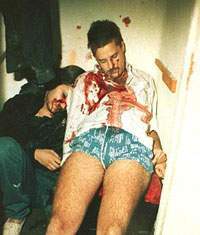 Constanzo then hugged Quintana Rodríguez, and De León stood in front of them before he opened fire and killed the two with a machine gun inside a closet.
Constanzo then hugged Quintana Rodríguez, and De León stood in front of them before he opened fire and killed the two with a machine gun inside a closet.
When the police climbed up the stairs and made it to Constanzo’s smoke-filled apartment, Aldrete ran from the door screaming that Constanzo was dead. De León later confessed that Constanzo had lost his mind and was saying that “everything was lost” and that “no one was going to have [his] money” when the police raid forced him to barricade himself in his apartment. He also stated that he participated in Kilroy’s murder and in other killings at Santa Elena, but both agreed that Constanzo did most of the killings himself.
Aldrete denied participation in the killings and stated that she was unaware of them until she saw the victims on national television. She said she was sorry to hear about Kilroy’s murder. She stated that she not an official member of the cult and was barely going through the initiation. In addition, she stated she was held prisoner during Constanzo’s hiding in Mexico City. When asked if she was in love with Constanzo, she denied it and said that she was only his follower.
At the scene, the police took Aldrete, De León, Orea Ochoa, Juan Carlos Fragoso, and Jorge Montes into custody. The police also arrested María de Lourdes Güero López and María del Rocío Cuevas Guerra, other cultists under Constanzo, in Mexico City later that day. They were renting one of Constanzo’s apartments. The individuals arrested that day were held for homicide, criminal association, wounding an officer, and damage to property. Fearing that Constanzo might have purposely faked his own death, investigators conducted fingerprint analysis. They concluded that the corpse was indeed Constanzo’s. Constanzo’s 9mm Uzi sub-machine gun and his supposed suitcase were never formally presented by the police as seized items. On May 15, a judge refused to set bail for them because they were wanted for crimes accumulating over 50 years in prison.
Criminal Sentences
On August 27, 1989, Orea Ochoa was admitted to a hospital in Santa Martha Acatitla after being diagnosed with AIDS. The police said that he and Aldrete were Constanzo’s lovers, but that Aldrete showed no signs of the disease in her immune system. He died on February 11, 1990.
On June 2, 1989, Salvador Vidal García Alarcón, a police chief of the Federal Judicial Police, was indicted for drug trafficking. He was linked to Constanzo by Aldrete and other cult members who claimed he acted as the group’s contact in the police. Aldrete said that Constanzo told her that he had killed two men to favor García Alarcón. The police chief, however, defended his stance and stated that Alarcón’s involvement with Constanzo was merely religious; he said that he was possessed with spirits at a young age and sought Constanzo for help. He was not charged with Kilroy’s murder or for any other killings conducted by Constanzo’s group.
In August 1990, De León was sentenced to 30 years in prison for killing Constanzo and Quintana Rodríguez. Fragosa and Montes were convicted of a separate murder charge and sentenced to 35 years in prison. Reyes Bustamante, the ranch caretaker, was accused in court of cover-up; he was released from prison on December 11, 1990, after paying a bond of $500 USD.
Drug Trafficking Charges
On June 10, 1993, drug trafficking charges against Ovidio and Ponce Torres were dropped in the U.S without a stated reason. On May 3, 1994, Aldrete was sentenced to 62 years in prison. Cult members Elio, Serafín Jr., Martínez Salinas, and Serna Valdez, received 67 years each. In an interview with the press, Kilroy’s parents stated that they were relieved to hear that the cultists were sentenced. The charges were multiple homicide (31 years), possession of narcotics (12 years), involvement in organized crime (5 years), police impersonation (2 years), illegal body desecration (2 years), illegal possession of firearms (10 years), and illegal possession of weapons exclusive to the Mexican Armed Forces (5 years).
The Mexican federal judge explained that the reason Aldrete received fewer years in prison than the rest was because she was not charged with using weapons that were military-exclusive, which carries a 5-year maximum sentence. He also stated that the maximum conviction a person in Mexico can receive for capital murder is 50 years. Since Mexico’s judicial system does not have parole, it allows for prisoners to file motions at an appeal court to reduce their sentences after several years. If this condition is denied or granted, inmates can then push for a writ of amparo.
On March 27, 1998, a Mexican federal court reduced the sentences of Elio, Serna Valdez, and Martínez Salinas by 17 years, lowering their sentences from 67 total years to 50. Since the death penalty and life sentences are not part of Mexico’s judicial system, reductions for charges that are over 50 years are common. In addition, individuals like the cult members, who were charged with murder and other serious crimes that push the total punishment sum above 50 years for capital murder, often have their sentences reduced by an appeal court. If the individuals were first-time offenders, as the cult members were, an appeals court may determine that it is reasonable to reduce their sentences. Elio was sent to a prison in Ciudad Victoria, Tamaulipas. The other two were sent to Federal Social Readaptation Center No. 1 in Almoloya, State of Mexico.
As of 2009, only two suspects remained at large, Ovidio and Ponce Torres, and were wanted for Kilroy’s murder in Mexico.
Claims of Innocence
Aldrete spoke to the press in 2003 and denied her participation in Kilroy’s murder and in the cult killings. She stated that it was impossible for investigators to understand what had happened at Santa Elena because the biggest evidence in the case, Constanzo, was dead. Aldrete also stated that the police hid the names of famous people involved with Constanzo for their own convenience. She concluded by stating that she believed in God and was not going to ask society for forgiveness because she was innocent of the crimes.
The following year, Aldrete interviewed with the press again and stated that she had been tortured to confess. She said she had been stripped naked, blindfolded, beaten upside down, and then had her toenails yanked. Aldrete claimed she was beaten so severely that doctors told her she would never be able to have children.
He Said She Said
In the early 2000’s, she (Aldrete) published an autobiography where she detailed how she meet Constanzo and the group, her experiences when she was allegedly taken hostage by Constanzo, her mistreatment by authorities, and her versions of the story. Aldrete claimed she visited Constanzo in Mexico City and was then taken hostage after Constanzo decided to not let her go because he believed that she would go to the police and tell them where they were hiding. She claimed that Constanzo and the rest of the group were unaware of the killings that occurred in Matamoros until they found out that the police was looking for them, but went into hiding nonetheless because they feared for their lives.
She detailed her alleged mistreatment’s in jail, and how she underwent beatings, psychological torture, rape, and an unfair trial. Her version of Constanzo’s death was different than the official one; she stated that Constanzo was executed by the police when they raided the apartment. She also questioned the police’s decision to burn down the shack in Santa Elena, since it was crucial for the investigation and probably contained the fingerprints of the murderers.
Serafin Pleads Innocent
In an interview with the press in 2014, Serafín and Martínez Salinas gave their versions of the story and proclaimed their innocence. Serafín stated that the Federal Judicial Police commander Juan Benítez Ayala found Serafín guilty because he was related to Elio and Ovidio. He said he was not arrested at the ranch, but rather at Elio’s in-law’s house in Matamoros. He said he grew up in Houston and moved to Brownsville for college, and that he was in Matamoros visiting his family when he was taken by the police. Serafín said he had been tortured by the Mexican and U.S. police in Matamoros to confess his participation in Kilroy’s murder and in the killings at Santa Elena. He said he was allegedly beaten and told that he and his family would be killed if he spoke English during his declaration. He said he was a student of Texas Southmost College and knew who Aldrete was, but had not had a relationship with her. Serafín also stated that he had never met Constanzo and had no idea his family ranch was a gathering place for his cult. He said that he had never dug up the bodies and had been taken to the ranch after the bodies were already exhumed.
Martinez
Martínez Salinas, on the other hand, stated that he was forced to confess because he was a neighbor at Santa Elena and driver of the Hernández family. He said he had been beaten and taken to the ranch where he was told to pose with the exhumed bodies. When asked if he had ever met Constanzo, he stated that he had seen him in person at the ranch with the Hernándezes but never talked to him. Martínez Salinas said he was arrested one afternoon at Elio’s in-law’s house when he was looking for a car piece for his vehicle. He said he had known Aldrete years before, since he had dated one of her sisters when he was young. He said that he had never heard Aldrete talk about the cult. He said she had talked about her school and marriage. He also said that Elio and Ovidio never invited him to the cult or talked to him about it.
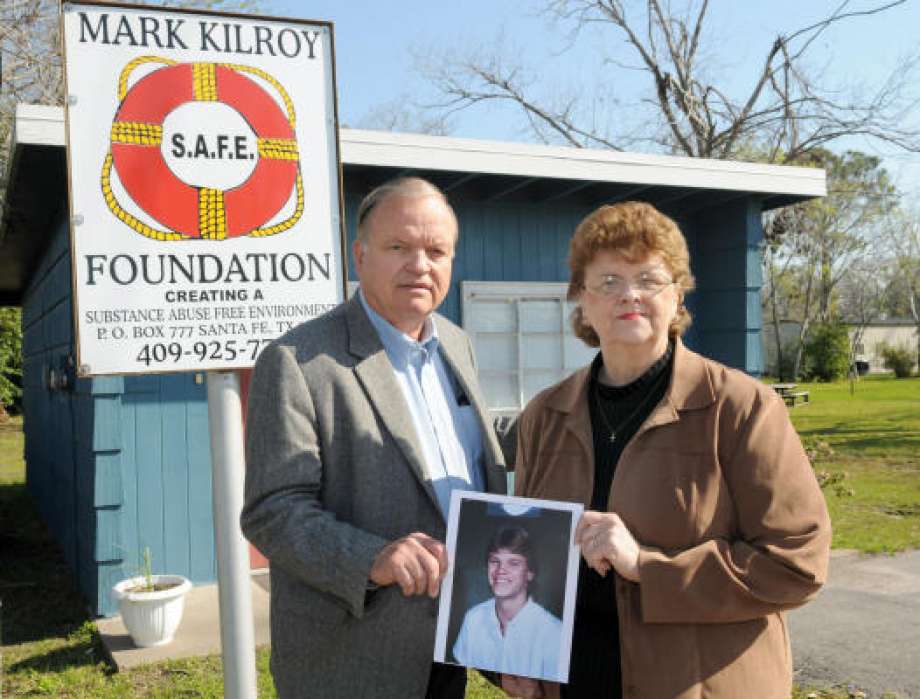 The Legacy
The Legacy
Two months after Mark James Kilroy was confirmed dead, his parents founded the Mark Kilroy Foundation which promotes drug awareness, education, and prevention through the “Just Say No” campaign. Since Kilroy’s dream was to become a doctor after college, his parents decided to help others and continue his dream through this program.
Since 1994, the foundation has sponsored and worked alongside Substance Abuse Free Environment (SAFE), a non-profit community group that promotes awareness for substance abuse and drug prevention. Both of them partner with the Santa Fe local government, its school system, and the ones nearby, and with businesses and private donors, to provide programs for the entire year. The full-time and part-time counselors visit school campuses during the academic year in Santa Fe and Hitchcock to hold programs for approximately 800 students regularly. When students are gone for the summer, the foundation conducts programs in summer camps by partnering with volunteers. They offer free outdoor activities like archery, golfing, fishing, tennis, and swimming. An average of 550 youth participate in these programs every summer.
According to Kilroy’s father, the purpose of these summer activities is to keep the youth distracted when they are not in school so they do not get bored and think about consuming drugs. On September 1999, the foundation signed an agreement with the U.S. Federal government to receive ten yearly grants of $100,000. By the tenth year, the government intended to stop the funding and expect the foundation to be self-supporting. However, Kilroy’s parents stated that the yearly expenses exceeded $160,000 and that they would need to find new ways to make up the deficit. The Mark Kilroy Foundation was one of the five non-profit organizations in the Galveston County that receives proceeds from a bingo place in La Marque, Texas. They also receive proceeds from sales of the book Sacrifice, written by Kilroy’s father and Bob Stewart in 1990.
Besides counseling kids and teenagers with drug advice, Kilroy’s parents also advise young people who plan to travel for spring break. They advise people to stay in groups, keep an eye on each other, and not wander off on their own. They also suggest tourists to be aware of travel warnings and abide by foreign laws and regulations when they travel outside the U.S., though they reiterated that people can get hurt in the U.S. too.
The Aftermath
After Mark James Kilroy was confirmed dead, the media framed the drug group and their religious practices as satanist. For the most part, the U.S. media labeled the group as satanist and gave little mention to the drug-related violence that was widespread in northern Mexico, thus failing to provide a wider picture of what happened at Matamoros. Reports concluded that because human body parts were found inside a large metal pot, the group practiced cannibalism. Some journalists made the error of attributing cannibalism with the common mistake of satanist groups sacrificing and eating human remains. Other writers, however, stated that Constanzo believed in Kadiempembe, the devil’s version in Palo Mayombe. In addition, some occult writers believed that the nature of Kilroy’s murder, which included mutilation and clandestine burial, were part of occult tradition.
On the 20th anniversary of his murder, Kilroy’s parents visited the Rio Grande Valley and Matamoros to thank the people who had supported them in their search for their son. Kilroy’s father stated that people were supportive and called the police whenever they saw something suspicious that they thought was related to their son’s disappearance. He said that it was easier to overcome their son’s death because of the support they received. Kilroy’s mother said she received a cross from a Brownsville woman when she was searching for her son in 1989. “It’s a reminder every time that I know that the Lord was involved in everything”, she said, while she touched and showed the cross around her neck.
credit wikipedia
























































